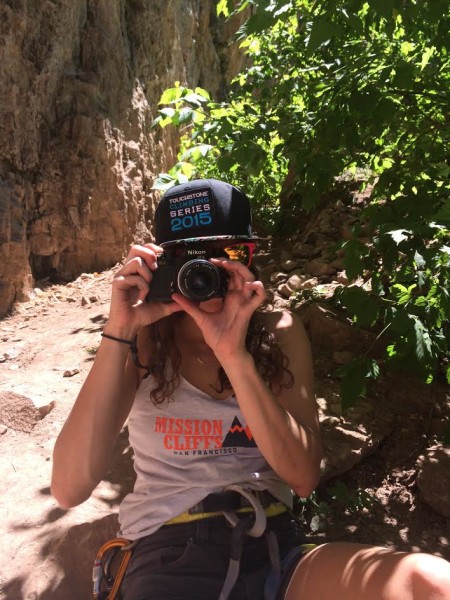
By Maxine Speier
I rolled into Carbondale, tired and sore, late on a Sunday night in mid-July. I had spent the weekend in Rifle Mountain Park, Colorado’s limestone sport-climbing Mecca, a 45- minute drive from Carbondale. I had been climbing with friends from Boulder, and they had taken full advantage of the late summer light, tying in and working out the moves on projects long past 9pm, hoping for (and in one case receiving) a last-minute send that we could toast over beer and burgers.
“I think this is the street,” said my friend Michelle.
“We’re already in Carbondale?” I asked. I hadn’t even noticed the small downtown we had just driven through.
“Yeah, your Airbnb should be just up here…oh god!”
I looked out the window of the car at the neon pink sign that decorated the porch of the otherwise indistinct, cozy, two-story house I had rented a room in. The sign said “Bates Motel.”
“Ha! Yeah, this must be it.”
Michelle pulled my mess of bags and climbing gear from her trunk and hugged me good- bye on the street. “Write a lot, have fun, and,” she eyed the neon sign again, “don’t get murdered! See you in Rifle next weekend.”
Carbondale, Colorado has a population of 6,553 – just a tad higher than its elevation of 6,181 feet. It’s a 30-minute bike ride from the booming tourist-town of Aspen and is the kind of place where people DO regularly bike commute long distances when the weather allows. It is the home of the popular climbing magazine, Rock and Ice, and was for many years also the home of Climbing Magazine (though the latter has since moved to Boulder).
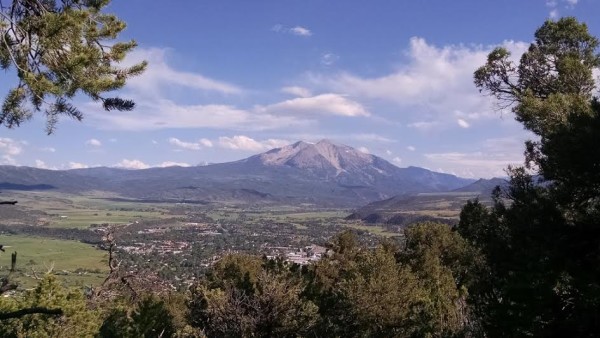
I was there for Rock and Ice’s second annual writing workshop, the John Long Writing Symposium, a five-day classroom-style writing camp held by the editorial staff of Rock and Ice as well as the legendary climber and adventure-writer, John Long.
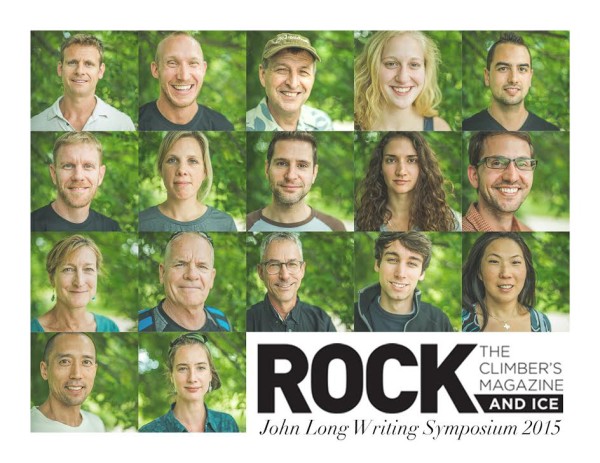

If you are interested in climbing media, you’ve probably already heard of Carbondale. In addition to having Rock and Ice, it’s where Chris Kalous runs his climbing podcast, The Enormocast. Because it’s a small town, everyone seems to know just about everyone else and on my first morning there, as I walked towards the Colorado Rocky Mountain School (CRMS) campus where the workshop was being held, I felt like I had stepped behind a curtain. This is where so many of the climbing news stories, that I read and listen to while I’m on BART back in the Bay, are told, edited, and circulated from.
The John Long Writing Symposium ran from 9am to 5pm that Monday through Friday, with a one hour break for lunch each day in the CRMS cafeteria (think of the best cafeteria meal you’ve ever had and then imagine it was 100 times better, locally grown, and prepared by a dedicated chef — that’s what the CRMS serves up to its students).
The fourteen participants who had come for the writing symposium ranged in age from 19 to 60 and came from as far away as Beijing. We were students, professors, engineers, writers, climbing guides, lawyers, and dirtbags. The one thing we all shared? A love of talking, reading, and writing about climbing.
We had come with prepared pieces to workshop and dug right into them that Monday morning.
“Everyone, email your pieces in now,” said Duane Raleigh, the publisher of Rock and Ice.
John Long’s computer chimed: “You’ve got mail.”
“I got ‘em,” said John.
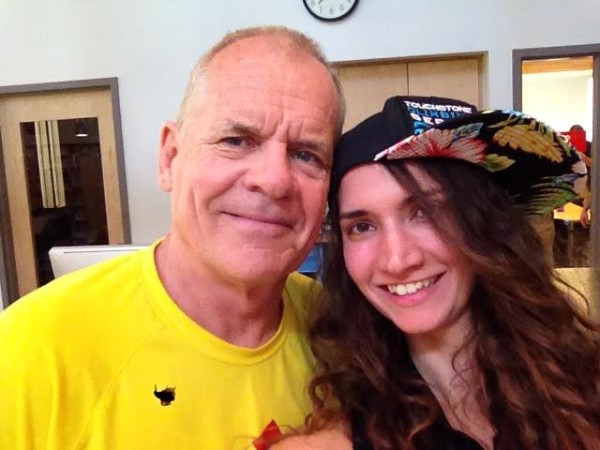
A word about John Long: even if you don’t know who he is, you’ve still probably read some of his writing. The intros and prefaces to many climbing books are filled with his essays. He was one of the Stonemasters, the group of California climbers that pushed the limits of the sport in the Seventies. He did the first one-day ascent of the Nose on El Capitan and he (literally) wrote the book on climbing: “How to Rock Climb.” John Long has a commanding presence. He is large, loud, funny, and likes to say exactly what is on his mind. He also doesn’t half-ass things. He was there to edit our stories and teach us what he knew about writing and he gave us everything he could in five short days (“Don’t be vague and say you were “aroused.” Give us detail! Did you have wood?”).
Sitting next to John and Duane were Alison Osius, the Executive Editor of Rock and Ice, and Andrew Bisharat, the Editor at Large at the magazine and also the writing force behind the blog Evening Sends.
Over the course of the week, this powerhouse of instructors gave presentations on feature writing, freelancing, editing, submitting, and finding stories. Between presentations, we worked on our pieces, going through several rewrites.
The nerve-wracking and emotionally unveiling atmosphere of a writing workshop can bring complete strangers together very quickly. When class was over each day, some of the students would stay in the CRMS library, working on our pieces. There were a few trips to explore nearby climbing areas like the Redstone boulders (which turned out to be too buggy in the late July evenings to get much climbing done on). There was a steak dinner at Duane’s house where a young pug named Petunia raced around chewing up the garden and ripping up paper napkins while we talked about the effect the Dawn Wall coverage had on climbing media.
On Wednesday, halfway through the symposium, a bunch of us met for Mexican food on Main Street and after several margaritas, decided to go to a bar, The Black Nugget, to “continue working.” We drank tequila shots, danced to live folk music, played ‘70s music trivia and, of course, told climbing stories.
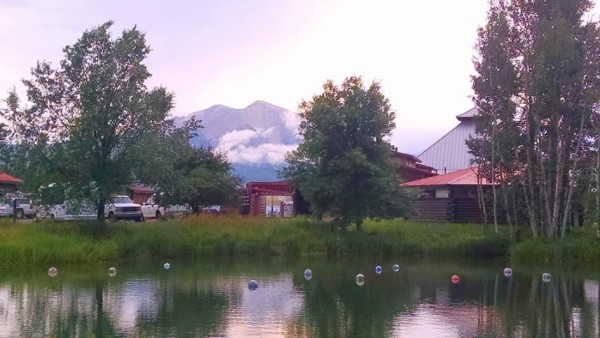
None of the Carbondale locals seemed to mind us too much, and that’s part of the town culture. A lot of people seem to be passing through. In a place that was once primarily a mining town (the Black Nugget’s doorway is carved with the names and ages of miners killed in accidents), there is now more money to be made as an outdoorsy tourist destination.
There are campgrounds and RV parks where people stay for weeks or months at a time, trying to live cheaply in the mountains. The Crystal River rushes by Main Street and the snowy peak of Mount Sopris can be seen from everywhere in town. Yes, it’s a small town, but it’s an incredibly open one too. It’s a place where people keep their doors unlocked, and smile at you and ask what brings you to town and tell you about the things you have to see before you leave. It’s the kind of place where a Bates Motel neon sign can be a funny joke, and where climbing outside every day feels possible.
On Thursday we took a tour of the Rock and Ice offices. The various departments (editorial, art, advertising, circulation) are all close to each other and walking through the offices, you can sense the camaraderie and passion that it takes to put together each issue.
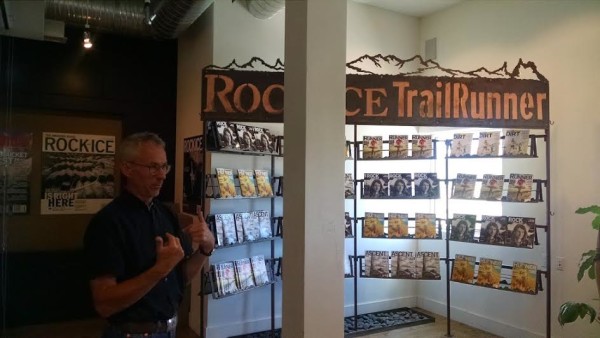
It’s a small team, who work hard all week and climb together on weekends. Posters of past magazine covers decorate the space, and climbing guides and new gear fill the shelves above people’s desks.

That afternoon, a few of the symposium participants who had finished with their edits for the week went out to Mushroom Rock, a short, steep hike that led out over a series of red, crumbly, mushroom-like rock features. Me and some of the other people who were coming from sea-level and still hadn’t acclimated to the altitude were breathing hard and sweating the whole way up. When we made it to the top, a green valley spread out below us. We could see the CRMS campus, and the Main Street, all like tiny props in a model train set. The whole week and the workshop had gone by too quickly and already felt so far away.
On Friday, when it really was over, we had one of the high school students from the CRMS take a group photo of us outside the library. Then everyone said good-bye and started to leave. John Long got on his bike and headed down the road back to his hotel. A few of us still milled around, soaking up the last views of Mount Sopris above the green fields, and the bright blue sky. We watched Duane and Alison and Andrew drive off.
“So, who wants to go to Rifle?”

